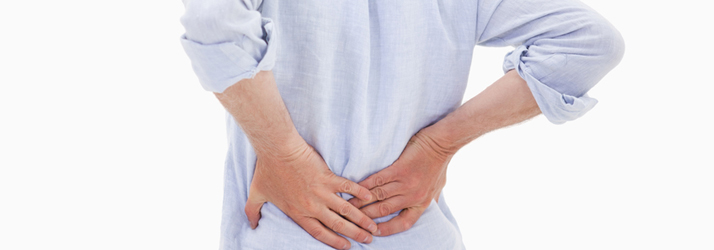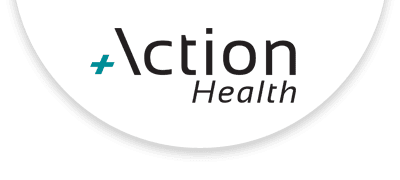What Is Manual Osteopathic
Therapy (Osteopathy)?

WHAT IS MANUAL OSTEOPATHIC THERAPY (OSTEOPATHY)?
Manual osteopathic therapy is a gentle and non-invasive hands-on therapy where we look at the body as a whole interrelated system. Our experienced practitioners are trained to help you manage a range of conditions and help restore balance to the systems in your body to help relieve or prevent pain and discomfort.
Osteopaths treat the individual as a whole by integrating the mind, body, and spirit to help you feel better. Osteopathy focuses on the following modalities:
Osteoarticular corrections
This approach looks at the body’s structures and uses gentle articular corrections to bring these structures back into alignment. Muscle energy techniques (MET) look at the range of motion of joints and use gentle muscle contractions to improve mobility and reduce pain in specific structures, joints and surrounding tissues.
- Back pain
- Joint pain (knees, shoulders, wrist, ankles, etc.)
- Pelvic discomfort
- Hip misalignment/pain
- Sacroiliac (SI) issues
- Overuse injuries
Myofascial release
This therapy includes treatment of the fascia, better known as our connective tissue. Fascia is a weblike covering of our connective tissue that supports and protects our muscles and organs. This covering permeates all regions of our bodies and is interconnected throughout.
When there is an area of dysfunction in the fascial tissue in one area of the body (from injury, inflammation, disease, surgery, or other causes), it can put tensile stress on different areas of the body, both close and far from the site of initial pain or dysfunction.
When tight, fascial strain can exert excessive pressure producing pain or restriction of motion while creating compensatory patterns influencing many aspects of our bodies.
- Soft tissue tightness
- Temporomandibular joint issues (TMJ)
- Strains
- Headaches
- Carpal tunnel syndrome
- Plantar fasciitis
Craniosacral therapy
This therapy is a very gentle technique used to assess and treat the spine, sacrum, and cranium (skull). This modality aims to adjust the body's physiology by restoring balance to the circulation of the blood and other body fluids (cerebrospinal fluid.)
- Headaches
- Ear infections
- Jaw pain (TMJ)
- Depression
- Anxiety
Visceral manipulation
This approach involves treating organs and viscera, including the liver, spell, kidneys, stomach, intestines, bladder, uterus, lungs and heart. Viscera may, over time (or due to injury), become less pliable. Therapists will palpate visceral tissue to determine the areas of restriction and use both direct and indirect techniques.
- Digestive disorders
- Tension and headaches
- Visceral fascia restriction
Who does osteopathy help?
Anyone experiencing any discomfort in any area of the body can find relief through osteopathic care. Typical clients express overall aches and pains, sometimes not improving from other forms of treatment. Osteopathy can be both a standalone and complementary treatment to other forms of therapy.
A typical client comes to osteopathy with some form of pain, whether acute or chronic, from injury or lifestyle (poor posture, etc.) An ideal client is someone open to a light and more non-invasive form of treatment.
When should people seek help?
We encourage patients to seek help whenever they are experiencing acute or chronic pain. In addition, because osteopathy is a more gentle form of therapy, individuals with high pain sensitivity can benefit from treatment.
Osteopathy is also seen as a preventative treatment, restoring the body to a state where it can function optimally and heal itself.
What are the benefits of osteopathy?
Osteopathy can benefit the musculoskeletal system, the visceral organs, the fascial tissue, the circulatory and lymphatic system, and the nervous system.
Relief can often be instant. However, it is not uncommon for the body to take some time after treatment to adjust to the changes that treatment may have induced.
What can I expect from my first visit?
Typically an extensive assessment is performed on a patient's first visit (one hour), where your manual osteopathic practitioner will discuss your medical history and specific health goals. Gathering information about factors such as past accidents, traumas, falls, and illnesses is essential before your first treatment.
Depending on the areas of dysfunction noted, treatment can range anywhere from 30 to 60 minutes. However, because our bodies are so different and individual, treatment may vary from body to body.
We typically recommend a follow-up appointment within the week, as our assessment aspect of treatment plays a significant role in noticing the changes happening within your body.
Depending on the severity of the pain or dysfunction, a therapist may recommend weekly visits until the source of the dysfunction is resolved and will often send you home with specific exercises or stretches to accelerate your path to healing.
What types of pain might bring a patient to an osteopath?
You might feel and describe your pain differently than other patients. Depending on the cause of the pain (for example, an accident, a fall, birth, etc.), referred pain will often directly correlate to other issues arising in the body, as the body naturally acts in a compensation response.
Patients might describe the pain as sharp, stabbing, aching, throbbing, pinching, pulling, numbness, or tingling in one or more areas of the body. This source of pain will almost always impact something elsewhere in the body, therefore creating this compensatory pattern where pain may pop up randomly in an area distant from the site of dysfunction.
NOTE: As always, our licensed practitioners at Action Health are your best source of up-to-date and accurate information regarding this and any other treatment plan we recommend.
Please call our front desk at (403) 243-8114 to book a consultation with one of our medical doctors to see if therapeutic BOTOX® is an appropriate treatment option for you.
OFFICE HOURS
Monday
8:00am - 6:00pm
Tuesday
8:00am - 6:00pm
Wednesday
8:00am - 6:00pm
Thursday
8:00am - 6:00pm
Friday
8:00am - 6:00pm
Saturday
9:00am - 4:00pm
Action Health
7722 Elbow Drive SW
Calgary, AB T2V 1K2

